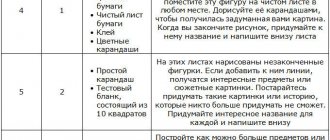Idiocy is the most severe degree of mental retardation. Patients suffer from this pathology from the moment of birth. Pathology can be detected already in a baby in the first weeks of life due to visual lag in psychomotor development.
The patients are completely helpless. They do not develop psychologically and emotionally. They are unable to recognize loved ones and relatives; they do not speak. Sick babies are born to absolutely healthy parents. The IQ of such sick patients will never exceed 20 throughout their lives.
Such children are not capable of learning. They don’t even learn basic self-care skills. They may exhibit obscene behavior and are unkempt. Children practically do not show positive emotions, but show a high tendency to aggression and self-aggression. They can tear their hair, pinch and bite themselves and others. Patients require lifelong supervision. In the most difficult cases, the ability to perceive the surrounding world is completely absent, not even the slightest motor activity.
Amaurotic idiocy
It is one of the most difficult variants of this most difficult diagnosis. In patients with amaurotic idiocy, the pathology progresses as they grow older. In a short time, the degradation of intelligence begins, which in a short time reaches the level of complete idiocy with a lack of reaction to any external stimuli. The patient's level of vision decreases, leading to complete blindness. Doctors identify a special structure of the fundus of the eye in those suffering from this pathology.
At the moment, the exact causes of the disease have not been identified. Observations of patients suggest the presence of a hereditary predisposition; pathology is often observed in related marriages. At birth, the baby suffers from hydrocephalus. He suffers from seizures and paralysis. Life expectancy does not exceed several months.
Etiology of the disease
Idiocy occurs under the influence of both external and endogenous factors, and the exact cause of underdevelopment of intellectual function is often simply impossible to determine, despite a thorough examination. The disease may be associated with:
- Pathologies of early intrauterine development. Today, about 400 pathological factors are known that can lead to defects in fetal maturation, especially since nervous tissue is most sensitive to their action. This is intoxication with alcohol, drugs, nicotine, some medications and other poisons. Not the least important role is played by environmental factors such as viral or bacterial diseases suffered by a woman during pregnancy (in particular, rubella), disturbances in the blood supply to the placenta, and deficiency of vitamins and other nutrients.
- Pathologies in the perinatal and postnatal period: hypoxia, traumatic brain injury, neuroinfections, severe illnesses in early (especially infancy) ages. Often, organic brain damage occurs when the fetus is not positioned correctly, the umbilical cord is entangled, or labor is prolonged or too rapid.
- Genetic defects (connections with hereditary factors are noted in almost 90% of cases). Idiocy is associated with gene mutations on the X chromosome, so the disorder is more common in boys.
Moronic idiocy
Debility is one of the degrees of mental retardation. This pathology can be either congenital or acquired. Among the reasons leading to debility, doctors note the following factors:
- hereditary predisposition, including generative pathology of the cells of the patient’s parents, in this case Down’s disease, true microcephaly and other pathologies of a similar type may develop;
- infection of the embryo or fetus during intrauterine development when the mother suffered during this period diseases such as rubella, syphilis, toxoplasmosis, and other infections caused by viruses;
- harmful factors that the child had to endure in the first three years of life, including head injuries, conflict between the Rh factor of the mother and the fetus, birth injuries and more.
Such patients can, with proper training, take care of themselves; they are educated in auxiliary schools. Some patients are partially gifted. With low overall thinking productivity, they, for example, can do mental arithmetic well. Patients may be apathetic or, conversely, have an increased level of excitability.
What causes profound mental retardation?
The predisposition to the manifestation of this disorder most often occurs in the womb or in childhood. Birth or postpartum trauma, as well as manifesting Down syndrome, are key causes of development.
Other causes of mental retardation:
— Transmission of infection by the mother during pregnancy; - The birth of a child weighing up to 1 kilogram (which is manifested by both physical weakness and mental retardation); — Poisoning of the mother’s body as a result of exaggerated dosage of antibiotics, chemical elements, antipsychotics.
Moronic imbecility idiocy
Patients suffering from oligophrenia may differ in level of development depending on the type. Mental retardation is divided into debility, imbecility and idiocy. Debility on this list is the least complex case of pathology. Patients are able to care for themselves. Many graduate from a specialized school and in the future can lead an almost full-fledged lifestyle, working in production, performing simple ore operations, for example, cleaning, loading and unloading. Due to impaired perception of the surrounding world, persons suffering from oligophrenia in the stage of debility require lifelong monitoring.
Idiocy imbecility
The average degree of oligophrenia is called imbecility. The pathology can be congenital or occur in the first months of life in case of head injuries or certain viral infections.
Imbeciles, unlike morons, are not able to fully take care of themselves, but can independently perform simple mechanical actions. For example, they are able to provide their own hygiene care. Patients suffering from oligophrenia in the imbecility stage may be recognized as trainable. They learn simple reading skills. As a rule, such patients are not able to master counting and perform simple mathematical operations. At the same time, such patients show a high degree of attachment to their relatives, they understand related feelings, and can find friends among similar patients. But they are distinguished by a complete lack of initiative. They get lost at the slightest change in the environment. They require constant care and are not capable of any independent actions.
Idiocy is the most complex degree of mental retardation. With this variant of the pathology, thinking and speech are almost completely absent. On the emotional level, patients are only able to demonstrate the presence of pleasure or displeasure at the most primitive level. Such patients are unable to distinguish relatives from strangers. They can pronounce only separate, unrelated and unconscious sounds.
REASONS FOR APPEARANCE
As mentioned above, brain damage and structural defects are to blame for underdevelopment of the brain. There are the following main groups that determine the presence of a control system:
- hereditary diseases (chromosomal and genetic);
- intrauterine infections - toxoplasmos, rubella and others that negatively affect the fetus;
- maternal consumption of toxic substances, alcoholic beverages, strong drugs, radiation, smoking;
- fetal prematurity;
- problems during childbirth and in the first months of a child’s life - oxygen starvation, mechanical head injuries, infectious diseases;
- lack of normal upbringing, training and socialization, the impossibility of full-fledged brain function as a result of this;
- unknown etiology.
Familial amaurotic idiocy
Complex and severe form of mental retardation. The pathology is based on a genetic disorder of lipid metabolism. The first manifestations of the diagnosis are most often detected between the ages of three and six months. The changes manifest themselves in degenerative processes in the retina of the eye, leading to complete blindness, progressive muscle weakness and complete mental retardation.
In medical practice, there are four types of pathology:
- Being an early form of Tay-Sachs disease, children who suffer from this diagnosis die at the age of a maximum of three years from increasing cachexia.
- The late form, which is called Bolshovsky-Yasky disease, symptoms appear in children aged 2-4 years. Children die at the age of 5-7 years.
- The juvenile variant, Spielmeyer-Vogt-Batten disease, begins to appear between the ages of 5 and 15 years. Patients suffer from paralysis, convulsive seizures, and their dementia progresses. The maximum life expectancy reaches 20 years in most cases.
- In adulthood, Kufs disease may begin to develop. Symptoms are similar to all types of this pathology. In this case, vision decreases gradually, paralysis and epileptic symptoms develop, and pronounced pigmentation of the fundus is present.
Regardless of the form of the pathology, there is currently no treatment. Only supportive therapy is used to alleviate the patient's suffering.
SYNDROMES COMBINED WITH DIFFERENT DEGREES OF IR
Down syndrome is the most common genetic cause of intellectual disability. It is caused by a chromosomal abnormality - if normally there are 46 of them, then in this case there is an unpaired 47th chromosome. People with this syndrome can be identified by an abnormally short skull, flat face, short arms and legs, short stature, and small mouth. They process the information received poorly and remember it, they lack the concept of time and space, and their speech is poor. Moreover, such individuals adapt well to society.
Martin-Bell syndrome (fragile X chromosome). The second most common genetic cause of mental retardation. It is recognized by the following external features: increased mobility of joints, an elongated face, an enlarged chin, a high forehead, large, protruding ears. They start talking late, but poorly, or don’t speak at all. They are very shy, hyperactive, inattentive, constantly moving their hands and biting them. Men have more cognitive impairment in this category than women.
Williams syndrome (“elf face”). It occurs as a result of hereditary chromosomal rearrangement, the loss of genes in one of them. The patients have a very interesting appearance: the face is narrow and long, blue eyes, flat nose, large lips. Usually suffer from cardiovascular diseases. Rich vocabulary, good memory, excellent musical abilities, and social interaction skills. But there are problems with psychomotor skills.
Angelman syndrome (happy doll or Parsley). Caused by a change in chromosome 15. Very light eyes with characteristic spots on the iris and hair, the head is small, the chin is pushed forward, the mouth is large, the teeth are sparse and long. Severe delay in psychomotor development, significant impairment of speech and movement (poor balance, walks on stiff legs). He often smiles and even laughs for no reason.
Prader-Willi syndrome . It is characterized by the absence of a paternal copy of chromosome 15 and a number of other disorders. He is short in stature, has small arms and legs, suffers from compulsive overeating, and, as a result, obesity. Problems with short-term memory, speech, information processing.
Lejeune's syndrome (cry of the cat or 5p syndrome). A very rare and serious disease caused by the absence of the short arm of chromosome 5. The head is small, the face is round, the lower jaw is underdeveloped and the bridge of the nose is wide, so the eyes are located far from each other. The feet are turned out, the hands are small. The larynx is underdeveloped, there are vision problems, in particular, strabismus. She often cries and makes a sound similar to a kitten meowing. Motor development is delayed, and the ability to pay attention is limited.
In addition to the syndromes mentioned, intellectual disability can coexist with cerebral palsy, deafness and blindness, autistic disorders, epilepsy and other somatic and mental illnesses.
Severe idiocy
In medical practice, there are several degrees of this form of mental retardation. Patients who have mild to moderate degrees are able to learn the simplest actions. They are sometimes able to recognize people who constantly communicate with them, distinguish between hot and cold. With constant practice, they are able to master several words, although they usually do not realize their meaning and cannot apply them in life.
Severe idiocy is the most complex variant of the highest degree of oligophrenia idiocy. Patients suffering from this diagnosis are able to lead only a vegetative existence. They do not react to the surrounding reality. Able to only pronounce individual unconscious sounds. Such patients require constant care. The development level corresponds to newborn children.
The downside of the diagnosis is that only doctors or people who spend a lot of time with the patient understand the difference in degrees. In fact, all three degrees are actually no different from each other.
Diagnostic methods
In diagnosing the disease, the assessment of the degree of intelligence development is of primary importance. A generally accepted indicator of cognitive functions is IQ, which is determined using the Wechsler scale (for idiocy, it does not exceed 20). For testing, we use a special version adapted for early childhood. However, such a technique cannot be considered universal, since intellectual development is also influenced by many other factors: characteristics of upbringing, social environment, etc. Therefore, when making a diagnosis, doctors also evaluate memory, attention, ability to adapt, communicate and learn.
In addition to psychological testing, for an objective assessment of the patient’s condition, data from laboratory and instrumental studies (EEG, tomography, radiography, Dopplerography, cytogenetic and general clinical tests) are required. In addition, if the suspected cause of idiocy is intrauterine pathologies, damage to other internal organs cannot be ruled out, which requires careful diagnosis and selection of symptomatic therapy.
Forms of idiocy
At the moment, doctors distinguish two forms of the most severe degree of mental retardation and idiocy:
- Torpid, patients suffering from it seem to be completely absent in space and time. Left to their own devices, they show no desire for even minimal movement. Without care, they die of hunger and thirst, as they are unable to understand the need to perform any actions.
- Excitable, in which case patients are in constant motion, constantly swinging like a pendulum, they can rhythmically beat their heads against the wall, floor, headboard, without feeling or understanding pain.
Regardless of the form, patients require constant care. They are unable to perform independent actions. Given the inability to recognize loved ones, doctors recommend sending such patients to specialized medical institutions.
The birth of a mentally retarded child with mental retardation in the stage of idiocy becomes a real curse for his family. Often relatives try to leave the patient with idiocy in the family, taking on onerous tasks in the field of care. In reality, doctors point out that such sacrifices are only advisable if it is possible to invite a professional nurse with a medical education to care for the patient. People suffering from this pathology often experience problems with the appearance of bedsores, they require monitoring due to the possibility of infection affecting the body, and require specialized hygiene procedures.
Article:
According to the severity of intellectual underdevelopment, oligophrenia is divided into three groups: debility, imbecility and idiocy, the quantitative ratio of which is 75%, 20% and 5%, respectively.
Debility is the mildest and most common form of mental retardation, which is most often encountered when selecting children for auxiliary schools. Children with mental retardation and mental retardation make up the main contingent of students in the auxiliary school and, quantitatively, the vast majority of its students. From a diagnostic point of view, this form sometimes presents certain difficulties, since the intellectual defect here is not clearly expressed. There are elements of the ability to generalize. At preschool age, there is a primitive idea in the game, the possibility of its simplest organization; in school - a certain assessment of a specific situation, orientation in simple practical issues. They have phrasal speech and often have good mechanical memory. All this contributes to the acquisition of a certain stock of information, mastery of reading, writing, counting skills, and the assimilation of knowledge provided for in the auxiliary school program.
In the absence of complicating factors, sufficient diligence and efficiency are found. The relative preservation of emotions and their more pronounced differentiation facilitate the development of self-control.
And yet, all the components of oligophrenic underdevelopment of intelligence are inherent in debility.
Thinking is visual and figurative in nature. The true formation of concepts turns out to be inaccessible. The ability to abstract and generalize is very weak. The meaning of what is read is poorly understood. Correctly perceiving objects and their images, children suffering from retardation find it difficult to compare them and establish the internal connections that exist between them. This is clearly manifested in an experiment with plot pictures, a series of sequential images, and in classification operations. When learning to count, children have difficulty grasping the concept of the quantitative content of a number and the meaning of conventional arithmetic signs. Without prior clarification, the conditions of a simple task are often not understood. When solving it, they get stuck on the previous method of action. They have difficulty learning spelling rules.
Phrases are primitive, speech often suffers from agrammatisms and tongue-tiedness. Verbal definitions that are not related to a specific situation are perceived slowly.
Personal immaturity is closely related to intellectual underdevelopment. Lack of independence of judgments and views, lack of curiosity in play, cognitive and work activities, and weakness of initiative are clearly evident. With a generally sufficient preservation of the emotional sphere, there are no complex shades of experiences.
There is a lack of subtle differentiated movements and expressive facial expressions. Scattered neurological signs, body dysplasia are quite common, and cerebroendocrine disorders are not uncommon.
With proper upbringing and training, timely instillation of work skills, and the absence of neuropsychic disorders complicating the intellectual defect, the social prognosis for this form of mental retardation is favorable. When performing work that does not require initiative, independence and quick switching, sufficient productivity is found. The presence of practical orientation and interest in one’s life contributes to the acquisition of labor skills and feasible social adaptation.
Imbecility is a more severe degree of dementia than debility. The specificity and severity of oligophrenic dementia appear with greater clarity in imbecility. This is primarily manifested in a complete inability to abstract from a specific situation and form even elementary concepts. Judgments are extremely poor and, for the most part, borrowed without revision from others. Logical processes are at a very low level. Children are not able to grasp the main idea of the story read to them; they reproduce its content only based on leading questions.
The insufficiency of visual and auditory analysis and synthesis is clearly manifested in difficulties in memorizing letters that are similar in spelling or sound, when merging sounds into syllables and syllables into words. Reading is often mechanical in nature, and there is no understanding of the meaning of what is read. It is possible to teach ordinal counting within the first ten, mechanical memorization of the multiplication table. Abstract calculation and the concept of number are inaccessible.
The vocabulary is small, sometimes limited to the names of individual objects. Speech is inexpressive, phrases are short and ungrammatical. Tongue-tiedness is often noted.
Motor skills are little differentiated. Synkinesis, slowness, lethargy, and awkward movements aggravate the difficulties of mastering writing and physical labor.
The activity is characterized by a lack of initiative, independence, and the use of cliches based on imitation. Only those types of work are available that consist of a stereotypical repetition of the same memorized techniques. There is no intellectual processing of one's own experience. Changing the work or home pattern causes a state of confusion. Therefore, adaptation to life and basic types of work is possible only with constant help, control and guidance. At the same time, these children often have a certain ability to observe in everyday situations. There is the ability to accumulate a certain amount of information. Understanding and pronouncing elementary phrases and establishing differences between objects based on identifying their simplest features are often available. It is possible to teach the elements of reading, writing, and simple ordinal counting. There are basic self-care skills. Simple immediate emotions are relatively preserved, as well as manifestations of sympathy, the desire to help, and reactions to praise and blame. There are the beginnings of self-esteem: the experience of one’s physical weakness, motor awkwardness.
In the absence of complications of mental retardation, children and adolescents suffering from imbecility <...> are often able to master basic types of physical labor (simple cardboard work, selecting simple parts for various household products by color and size, etc.). With a severe degree of imbecility, training in even simple types of production work is impossible.
The severity of the intellectual defect in imbecility varies. With less severe dementia (presence of sufficiently developed speech, the ability to acquire basic practical skills), differentiation from debility often presents certain difficulties. In these cases, it is advisable to send children to diagnostic classes in auxiliary schools, where the severity of an intellectual defect is assessed based on the degree of learning ability.
In the neurological status of children suffering from imbecility, a variety of symptoms are often encountered, indicating pathology of the cranial nerves, other subcortical disorders, pathological reflexes, <...> convulsive seizures are not uncommon. Characteristic are skull dysplasia, micro- and hydrocephalus phenomena, etc.
In physical appearance, more often than in cases of debility, various body dysplasias and cerebral-endocrine disorders are observed.
Idiocy represents the most severe degree of mental retardation. There is gross underdevelopment of perception functions. The reaction to the environment is weak or inadequate. Self-awareness is vague. There is essentially no thinking (alogy).
In addressed speech, it is not its meaning that is perceived, but the intonation and facial expressions and gestures accompanying the speech. The characteristics of one’s own speech depend on the depth of idiocy. Speech can be limited to individual inarticulate sounds or is a set of single words (nouns or verbs, often in an indefinite form), used without grammatical agreement, with a gross violation of pronunciation, and frequent misunderstanding of the meaning.
Emotions are extremely elementary and are mostly associated with physical well-being and physiological needs. The source of pleasure and primitive manifestations of joy are somatic well-being, a feeling of satiety, warmth, satisfaction of pathological drives (gluttony, masturbation, finger sucking, chewing inedible objects). The feeling of displeasure is caused by a feeling of cold, hunger, pain, and somatic discomfort. The forms of expression of affect are primitive: joy is manifested in motor excitement, expressive cry and facial expressions; in a state of anger, aggression and a tendency to self-harm are observed. The affect of fear and manifestations of negativism are often associated with the fear of the new, the unknown. However, with milder degrees of idiocy, the beginnings of social feelings can be found in patients: elements of attachment to the people who feed and care for them, manifestations of joy when praised, vague anxiety when blamed. The general background of the mood is characterized by either complacency with elements of euphoria, or lethargy and apathy, less often, anger and gloominess.
Underdevelopment of motor skills is manifested in extreme poverty of facial expressions, monotony and slowness of movements, violations of their coordination, up to disorders of standing and walking skills.
There is essentially no activity. No self-care skills. Behavior is limited either by actions related to the realization of instinctive needs, or by elementary affective and motor reactions to an external stimulus. Left to their own devices, some patients lie or sit without reacting to their surroundings, others are restless and fussy aimlessly. Motor stereotypies have the character of rhythmic swaying of the body, monotonous movements of the head and limbs.
In the neurological status, deformations of the skull, paresis, paralysis, and convulsive seizures are not uncommon. Gross defects in physical development are common: pronounced dysplasia of the physique, malformations of the skin, internal organs, endocrine and metabolic disorders.









